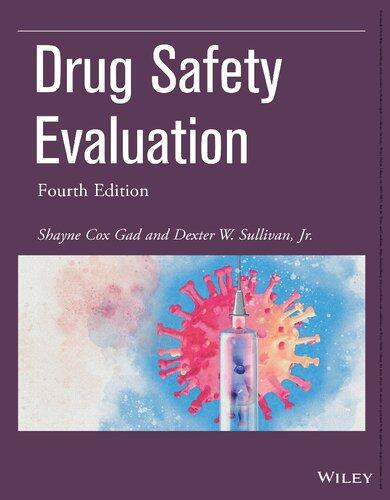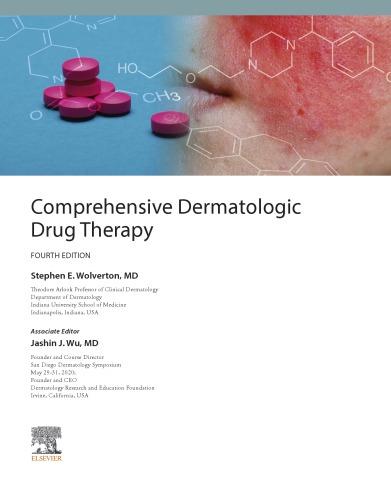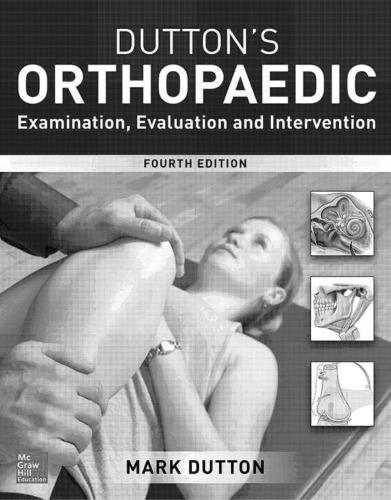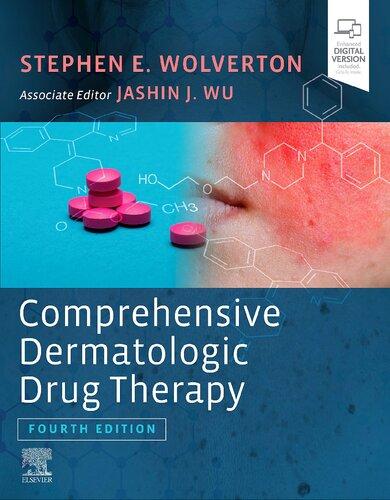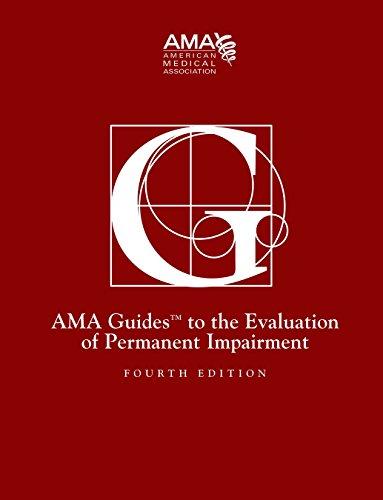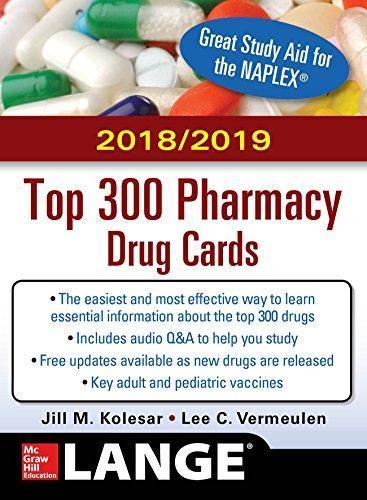DRUG SAFETY EVALUATION
Fourth Edition
SHAYNE COX GAD
Gad Consulting Services
DEXTER W. SULLIVAN, JR.
Gad Consulting Services
This edition first published 2023
© 2023 John Wiley & Sons, Inc.
Edition History
John Wiley & Sons (1e, 2003; 2e, 2009; 3e, 2017)
All rights reserved. No part of this publication may be reproduced, stored in a retrieval system, or transmitted, in any form or by any means, electronic, mechanical, photocopying, recording or otherwise, except as permitted by law. Advice on how to obtain permission to reuse material from this title is available at http://www.wiley.com/go/permissions.
The right of Shayne Cox Gad and Dexter W. Sullivan, Jr. to be identified as the authors of this work has been asserted in accordance with law.
Registered Office
John Wiley & Sons, Inc., 111 River Street, Hoboken, NJ 07030, USA
For details of our global editorial offices, customer services, and more information about Wiley products visit us at www.wiley.com.
Wiley also publishes its books in a variety of electronic formats and by print-on-demand. Some content that appears in standard print versions of this book may not be available in other formats.
Trademarks: Wiley and the Wiley logo are trademarks or registered trademarks of John Wiley & Sons, Inc. and/or its affiliates in the United States and other countries and may not be used without written permission. All other trademarks are the property of their respective owners. John Wiley & Sons, Inc. is not associated with any product or vendor mentioned in this book.
Limit of Liability/Disclaimer of Warranty
In view of ongoing research, equipment modifications, changes in governmental regulations, and the constant flow of information relating to the use of experimental reagents, equipment, and devices, the reader is urged to review and evaluate the information provided in the package insert or instructions for each chemical, piece of equipment, reagent, or device for, among other things, any changes in the instructions or indication of usage and for added warnings and precautions. While the publisher and authors have used their best efforts in preparing this work, they make no representations or warranties with respect to the accuracy or completeness of the contents of this work and specifically disclaim all warranties, including without limitation any implied warranties of merchantability or fitness for a particular purpose. No warranty may be created or extended by sales representatives, written sales materials or promotional statements for this work. The fact that an organization, website, or product is referred to in this work as a citation and/or potential source of further information does not mean that the publisher and authors endorse the information or services the organization, website, or product may provide or recommendations it may make. This work is sold with the understanding that the publisher is not engaged in rendering professional services. The advice and strategies contained herein may not be suitable for your situation. You should consult with a specialist where appropriate. Further, readers should be aware that websites listed in this work may have changed or disappeared between when this work was written and when it is read. Neither the publisher nor authors shall be liable for any loss of profit or any other commercial damages, including but not limited to special, incidental, consequential, or other damages.
Library of Congress Cataloging-in-Publication Data
Names: Gad, Shayne C., 1948- author. | Sullivan, Dexter W., Jr. author.
Title: Drug safety evaluation / Shayne Cox Gad, Dexter W. Sullivan Jr.
Description: 4th edition. | Hoboken, NJ : Wiley, 2023. | Includes bibliographical references and index.
Identifiers: LCCN 2022042520 (print) | LCCN 2022042521 (ebook) | ISBN 9781119755852 (cloth) | ISBN 9781119755869 (adobe pdf) | ISBN 9781119755876 (epub)
Subjects: MESH: Drug Evaluation, Preclinical | Drug Evaluation | Product Surveillance, Postmarketing
Classification: LCC RA1238 (print) | LCC RA1238 (ebook) | NLM QV 771 | DDC 615/.19—dc23/eng/20221110
LC record available at https://lccn.loc.gov/2022042520
LC ebook record available at https://lccn.loc.gov/2022042521
Cover Design: Wiley
Cover Image: © VICTOR HABBICK VISIONS/Getty Images
Set in 10/12pt Times LT Std by Straive, Chennai, India
To my beloved Novie Beth, for years of love and support, and to my aunt Ernestine, who is our matron and always a firecracker.
Shayne
Cox Gad
To Adrienne and Ayden, for your patience and support, and to my mother, Debby Mandeville, who never fails to inspire me with her courage.
Dexter
W. Sullivan, Jr.
ACKNOWLEDGMENT
Katina Gad’s support and assistance were essential to the completion of this book.
1 The Drug Development Process and The Global Pharmaceutical Marketplace 1
1.1 Introduction 1
1.2 The Marketplace 1
1.3 History of Modern Therapeutics 7
1.4 The Drug Development Process 11
1.5 Strategies For Development: Large Versus Small Company or The Short Versus Long Game 12
1.5.1 Do Only What You Must (The Short Game) 13
1.5.2 Minimize the Risk of Subsequent Failure 13
1.6 Safety Assessment And The Evolution Of Drug Safety 14
1.7 The Three Stages of Drug Safety Evaluation In The General Case 16 References 17
2 Regulation of Human Pharmaceutical Safety: Routes To Human Use and Market 19
2.1 Introduction 19
2.2 Brief History of Us Pharmaceutical Law 19
2.2.1 1906: Pure Food and Drug Act 19
2.2.2 1938: Food, Drug, and Cosmetic Act 21
2.2.3 1962: Major Amendment 23
2.2.4 1992, 1997, 2002, 2007, 2012, and 2017: PDUFA, FDAMA, and FDARA 24
2.2.5 PREA: The Pediatric Research Equity Act 27
2.2.6 ICH: International Conference on Harmonization 27
2.2.7 Electronic Recordings: Electronic Submissions Impact 27
2.2.8 COVID-19 27
2.3 Fdama Summary: Consequences and Other Regulations 28
2.4 Overview of us Regulations 28
2.4.1 Regulations: General Considerations 28
2.4.2 Regulations: Human Pharmaceuticals 28
2.4.3 Regulations: Environmental Impact 30
2.4.4 Regulations: Antibiotics 30
2.4.5 Regulations: Biologics 30
2.4.6 Regulations Versus Law 31
2.5 Organizations Regulating Drug And Device Safety In The United States 32
2.6 Process Of Pharmaceutical Product Development and Approval 32
2.7 Testing Guidelines 34
2.7.1 Toxicity Testing: Traditional Pharmaceuticals 34
2.7.2 General or Systematic Toxicity Assessment 34
2.7.3 Genetic Toxicity Assessment 34
2.7.4 Safety Pharmacology 36
2.7.5 Local Tissue Tolerance 36
2.7.6 Reproductive and Developmental 37
2.7.7 Carcinogenicity 37
2.7.8 Toxicity Testing: Biotechnology Products 37
2.8 Toxicity/Safety Testing: Cellular And Gene Therapy Products 39
2.8.1 Cellular Therapies 40
2.8.2 Gene Therapies 40
2.8.3 ex vivo 40
2.8.4 in vivo 40
2.8.5 Preclinical Safety Evaluation 41
2.8.6 Basic Principles for Preclinical Safety Evaluation of Cellular and Gene Therapies 41
2.8.7 Additional Considerations for Cellular Therapies 41
2.8.8 Additional Considerations for Gene Therapies 41
2.9 Toxicity Testing: Special Cases 41
2.9.1 Oral Contraceptives 42
2.9.2 Life-Threatening Diseases (Compassionate Use) 42
2.9.3 Vaccines 42
2.9.4 Oncology Drugs and Imaging Agents 43
2.9.5 Optical Isomers 43
2.9.6 Special Populations: Pediatric and Geriatric Claims 43
2.9.7 Orphan Drugs 45
2.9.8 Expedited and Augmented Routes to Approval (Once you have an InD) 45
2.9.9 Botanical Drug Products 45
2.9.10 Types of new Drug Applications (nDAs) 48
2.10 International Pharmaceutical Regulation and Registration 48
2.10.1 International Council for Harmonization 48
2.10.2 Other International Considerations 52
2.10.3 Safety Pharmacology 58
2.11 Combination Products 58
2.11.1 Device Programs That Are CDER and CBRH Each Will Administer 59
2.11.2 Coordination 59
2.11.3 Submissions 59
2.12 Meetings And Submissions To Fda Toxicologists 63
2.13 Conclusion 64
References 64
Further Reading 66
3 Data Mining: Sources of Information For Consideration In Study And Program Design and In Safety Evaluation 67
3.1 Introduction 67
3.1.1 Claims 67
3.1.2 Time and Economies 67
3.1.3 Prior Knowledge 67
3.1.4 Miscellaneous Reference Sources 68
3.1.5 Search Procedure 70
3.1.6 Monitoring Published Literature and Other Research in Progress 70
3.1.7 Kinds of Information 71
3.1.8 Toxic Release Inventory (TRI) 71
3.1.9 Material Safety Data Sheets (MSDS) 71
3.1.10 Canadian Centre for Occupational Health and Safety (CCInFO) 72
3.1.11 Pollution and Toxicology (POLTOX) 72
3.1.12 Medline 72
3.2 Pc-Based Information Products: Laser Disc 72
3.2.1 International Veterinary Pathology Slide Bank (Ivpsb) 72
3.3 Conclusion 73 References 73 Further Reading 74
4 Electronic Records, Reporting, and Submission: eCTD and Send 75
4.1 Introduction 75
4.2 Submission of Send Data In Module 4 of The eCTD 76
4.3 Send Background 76
4.4 Send Regulatory 77
4.5 Send Features 77
4.6 Send Study Submission Package 80
4.7 Determination of Studies That need Data To Be Submitted As Send Files 80
4.7.1 FDA Center 80
4.7.2 Type of Application 80
4.7.3 Study Start Date 80
4.8 Storage of Files At The Fda 81
4.9 Recommended Regulatory Resources 81 References 81
5 Screens in Safety and Hazard Assessment 83
5.1 Introduction 83
5.2 Characteristics of Screens 84
5.3 Uses of Screens 86
5.4 Types of Screens 87
5.4.1 Single Stage 87
5.4.2 Sequential 87
5.4.3 Tier (or Multistage) 87
5.5 Criterion: Development And Use 87
5.6 Analysis Of Screening Data 88
5.7 Univariate Data 89
5.7.1 Control Charts 89
5.7.2 Central Tendency Plots 90
5.7.3 Multivariate Data 90
5.7.4 The Analog Plot 91
References 92
6 Formulations, Routes, and Dosage Regimens 95
6.1 Introduction 95
6.2 Mechanisms 97
6.2.1 Local Effects 97
6.2.2 Absorption and Distribution 98
6.2.3 Metabolism 99
6.3 Common Routes 99
6.3.1 Dermal Route 99
6.3.2 Parenteral Routes 100
6.3.3 Bolus versus Infusion 102
6.3.4 Oral Route 103
6.3.5 Minor Routes 111
6.3.6 Route Comparisons and Contrasts 113
6.4 Formulation Of Test Materials 113
6.4.1 Preformulation 114
6.4.2 Dermal Formulations 117
6.4.3 Interactions Between Skin, Vehicle, and Test Chemical 119
6.4.4 Oral Formulations 120
6.4.5 Parenteral Formulations 121
6.5 Dosing Calculations 122
6.6 Calculating Material Requirements 122
6.7 Excipients 123
6.7.1 Regulation of Excipients 123 References 128
7 Mechanisms And End Points Of Drug Toxicity 131
7.1 Manifestations 131
7.2 Mechanisms Of Toxicity 132
7.3 End Points Measured In General Toxicity Studies 132
7.3.1 Clinical Observations 132
7.3.2 Body Weights 132
7.3.3 Food and Water Consumption 133
7.3.4 Clinical Signs 133
7.3.5 Clinical Chemistry and Pathology 136
7.3.6 Hematology 137
7.3.7 Gross necropsy and Organ Weights 137
7.3.8 Histopathology 137
7.3.9 Ophthalmology 140
7.3.10 Cardiovascular Function 140
7.3.11 neurotoxicology 140
7.3.12 Immunotoxicology 140
7.3.13 Imaging and Telemetry 141
7.4 Complications 141 References 141
8 Pilot Toxicity Testing In Drug Safety Evaluation: MTD and DRF 143
8.1 Introduction 143
8.2 Range-Finding Studies 143
8.2.1 Lethality Testing 144
8.2.2 Using Range-Finding Lethality Data in Drug Development: The Minimum Lethal Dose 150
8.3 Acute Systemic Toxicity Characterization 153
8.3.1 Minimal Acute Toxicity Test 153
8.3.2 Complete Acute Toxicity Testing 157
8.3.3 Acute Toxicity Testing with nonrodent Species 161
8.3.4 Factors that Can Affect Acute Tests 163
8.3.5 Selection of Dosages 164
8.4 Screens 165
8.4.1 General Toxicity Screens 165
8.4.2 Specific Toxicity Screening 168
8.5 Pilot And DRF Studies 169 References 171
9 Repeat-Dose Toxicity Studies 173
9.1 Objectives 173
9.2 Regulatory Considerations 175
9.2.1 Good Laboratory Practices 175
9.2.2 Animal Welfare Act 175
9.2.3 Regulatory Requirements for Study Design 176
9.3 Study Design and Conduct 176
9.3.1 Animals 176
9.3.2 Routes and Setting Doses 177
9.3.3 Parameters to Measure 178
9.3.4 Study Designs 179
9.4 Study Interpretation and Reporting 180
9.5 Read Across For Program Wide Evaluation 180 References 181
10 Genotoxicity 183
10.1 ICH Test Profile 183
10.2 DnA Structure 184
10.2.1 Transcription 185
10.2.2 Translation 185
10.2.3 Gene Regulation 185
10.2.4 DnA Repair 185
10.2.5 Error-Prone Repair 186
10.2.6 Mismatch Repair 186
10.2.7 The Adaptive Repair Pathway 186
10.2.8 Plasmids 186
10.2.9 Plasmids and DnA Repair 187
10.2.10 nature of Point Mutations 187
10.2.11 Suppressor Mutations 187
10.2.12 Adduct Formation 187
10.2.13 Mutations Due to Insertion Sequences 188
10.2.14 The Link Between Mutation and Cancer 188
10.2.15 Genotoxic Versus nongenotoxic Mechanisms of Carcinogenesis 188
10.2.16 Genetic Damage and Heritable Defects 189
10.2.17 Reproductive Effects 190
10.3 Cytogenetics 190
10.3.1 Cytogenetic Damage and Its Consequences 190
10.3.2 Individual Chromosomal Damage 190
10.3.3 Chromosome Set Damage 191
10.3.4 Test Systems 191
10.3.5 In vitro Test Systems 192
10.3.6 Bacterial Mutation Tests 194
10.3.7 Controls 195
10.3.8 Plate Incorporation Assay 198
10.3.9 Eukaryotic Mutation Tests 199
10.3.10 In vitro Tests for the Detection of Mammalian Mutation 199
10.3.11 In Vivo Mammalian Mutation Tests 207
10.4 In vitro Cytogenetic Assays 208
10.4.1 Cell Types 208
10.4.2 Chinese Hamster Cell Lines 208
10.4.3 Human Peripheral Blood Lymphocytes 208
10.4.4 Positive and negative Controls 209
10.4.5 Treatment of Cells 209
10.4.6 Scoring Procedures 210
10.4.7 Data Recording 210
10.4.8 Presentation of Results 210
10.5 In vivo Cytogenetic Assays 210
10.5.1 Somatic Cell Assays 211
10.5.2 Germ Cell Assays 211
10.5.3 Heritable Chromosome Assays 211
10.5.4 Germ Cell Cytogenetic Assays 211
10.6 Sister Chromatid Exchange Assays 212
10.6.1 Relevance of SCE in Terms of Genotoxicity 212
10.6.2 Experimental Design 212
10.7 How to Deal with Positive Test Results 213 References 214
11 QSAR Tools For Drug Safety 223
11.1 Structure–Activity Relationships 223
11.1.1 Basic Assumptions 224
11.1.2 Molecular Parameters of Interest 224
11.2 Sar Modeling Methods 224
11.3 Applications In Toxicology 226
11.3.1 Metabolism 227
11.3.2 Reproductive 227
11.3.3 Eye Irritation 227
11.3.4 Lethality 227
11.3.5 Carcinogenicity 228
11.4 Genotoxicity 230
11.4.1 QSAR for Mutagenicity 230
11.5 Comparison Of Available Models/Applications 231
11.5.1 QSAR of Metabolism 231
11.5.2 Meteor 232
11.5.3 Derek 232
11.5.4 Leadscope 233
11.5.5 VEGA 233
11.5.6 Derek versus Leadscope 235
11.6 near neighbor Surrogates And Their Use 237 References 238
12 Toxicogenomics 241
12.1 Introduction 241
12.2 Uses of Toxicogenomics 242 References 243
13 Immunotoxicology In Drug Development
13.1 Introduction 247
13.2 Overview of The Immune System 249
13.3 Immunotoxic Effects 250
13.4 Immunosuppression 251
13.4.1 Immunosuppressive Drugs 253
13.5 Immunostimulation 256
13.5.1 Hypersensitivity (or Allergenicity) 257
13.5.2 Photosensitization 259
13.5.3 Autoimmunity 260
13.6 Regulatory Positions 262
13.6.1 CDER Guidance for Investigational new Drugs 263
13.7 Evaluation of The Immune System 265
13.7.1 Immunopathologic Assessments 267
13.7.2 Humoral (Innate) Immune Response and Possible Entry Points for Immunotoxic Actions 268
13.7.3 Cell-Mediated Immunity 271
13.8 nonspecific Immunity Function Assay 273
13.8.1 natural Killer Cell Assays 273
13.8.2 Macrophage Function 273
13.8.3 Mast Cell/Basophil Function 273
13.9 T-Cell-Dependent Antibody Response (TDAR) 274
13.9.1 Treatment 274
13.9.2 Hypersensitivity 275
13.9.3 Local Lymph node Assay (LLnA) 277
13.9.4 Photosensitization 279
13.10 Approaches To Compound Evaluation 280
13.10.1 Use of in vivo Tests 280
13.10.2 Use of in vitro Tests 281
13.10.3 Assessment of Immunotoxicity and Immunogenicity/Allergenicity of Biotechnology-Derived Drugs 282
13.10.4 Suggested Approaches to Evaluation of Results 282
13.11 Problems And Future Directions 283
13.11.1 Data Interpretation 284
13.11.2 Appropriate Animal Models 284
13.11.3 Indirect Immunotoxic Effects 284
13.11.4 Hypersensitivity Tests 284
13.11.5 Anaphylaxis Tests 284
13.11.6 Autoimmunity 285
13.11.7 Functional Reserve Capacity 285
13.11.8 Significance of Minor Perturbations 285
13.11.9 Biotechnology Products 286
13.12 Summary 286 References 286
247
14 Nonrodent Animal Studies 293
14.1 Introduction 293
14.2 Comparison Between Rodent And nonrodent Experimental Design 293
14.2.1 number of Animals 293
14.3 Differences In Study Activities 294
14.3.1 Blood Collection 294
14.3.2 Dosing 294
14.3.3 Handling of Animals 294
14.3.4 Behavioral Evaluation 294
14.4 nonrodent Models 294
14.5 Dog 294
14.5.1 Environmental and Dietary Requirements 294
14.5.2 Common Study Protocols 295
14.5.3 General Study Activities 296
14.5.4 Advantages and Disadvantages 297
14.6 The Ferret 297
14.6.1 Environmental and Dietary Requirements 297
14.6.2 Study Protocols 298
14.6.3 General Study Activities 298
14.6.4 Advantages and Disadvantages 299
14.7 The Pig 299
14.7.1 Background 299
14.7.2 Clinical Laboratory 300
14.7.3 Xenobiotic Metabolism 301
14.7.4 Dermal Toxicity 302
14.7.5 Cardiovascular Toxicity 303
14.7.6 Advantages and Disadvantages 303
14.8 The Rabbit 303
14.8.1 Excretion 304
14.8.2 Husbandry 304
14.8.3 Dosing Techniques 305
14.8.4 Collection Techniques 307
14.8.5 Study Designs 308
14.8.6 Metabolism 308
14.9 nonhuman Primates 315
14.9.1 Environmental and Dietary Requirements 316
14.9.2 Common Study Protocols 316
14.9.3 General Study Activities 317
14.9.4 Advantages and Disadvantages 319
14.10 Issues In Animal Model Selection 319
14.11 Statistics In Large Animal Studies 319
14.11.1 Reasons for Small Sample Sizes in Large Animal Toxicology 319
14.11.2 Cross-Sectional or Longitudinal Analysis? 320
14.11.3 Repeated Measures: Advantages 320
14.11.4 Repeated Measures: Disadvantages 320
14.11.5 Common Practices in Large Animal Toxicology 320
14.11.6 Univariate (Repeated Measures) Techniques: Advantages 320
14.11.7 Univariate (Repeated Measures) Techniques: Disadvantages 321
14.11.8 Multivariate Techniques: Advantages 321
14.11.9 Multivariate Techniques: Disadvantages 321
14.11.10 Some Other Design Factors to Be Considered in Analysis 321
14.11.11 Covariates: Advantages 321
14.11.12 Covariates: Disadvantages 321
14.11.13 Missing Values 324
14.12 Read Across For Cross Species Data Integration 325
14.13 Summary 325 References 325
15 Developmental And Reproductive Toxicity Testing 331
15.1 Introduction 331
15.2 Ich Study Designs 333
15.2.1 Male and Female Fertility and Early Embryonic Development to Implantation 333
15.2.2 Embryo–Fetal Development 335
15.2.3 Adverse Effects 335
15.2.4 Pre- and Postnatal Development 335
15.2.5 Single-Study and Two-Study Designs for Rodents 336
15.2.6 Preliminary Studies 336
15.2.7 Potential Male Mediated Developmental Effects 337
15.2.8 Toxicokinetics 338
15.2.9 Timing of Studies 338
15.3 Methodological Issues 339
15.3.1 Control of Bias 339
15.3.2 Diet 339
15.3.3 Clinical Pathology 340
15.3.4 Gravid Uterine Weights 340
15.3.5 Implant Counts and Determination of Pregnancy 341
15.3.6 Fetal Examinations 342
15.3.7 Developmental Signs 343
15.3.8 Behavioral Tests 344
15.3.9 Detecting Effects on Male Reproduction 344
15.4 Developmental Studies In Primates 344
15.5 Data Interpretation 345
15.5.1 Use of Statistical Analyses 345
15.5.2 Potential Hazard Categories of Developmental Toxins 347
15.5.3 Associations Between Developmental and Maternal Toxicity 349
15.5.4 Assessment of Human Risk 349
15.6 Juvenile And Pediatric Toxicology 351
15.7 In Vitro Tests For Developmental Toxicity 353
15.8 Appraisal of Current Approaches For Determining Developmental And Reproductive Hazards 357 References 358
16 Carcinogenicity Studies 363
16.1 Introduction 363
16.1.1 History Of Xenobiotic Carcinogenesis 365
16.2 Mechanisms And Classes Of Carcinogens 365
16.3 Genotoxic Carcinogens 365
16.4 Epigenetic Carcinogens 368
16.5 Regulatory Requirements And Timing 371
16.5.1 Waivers of Required Testing 371
16.6 Species And Strain 372
16.7 Animal Husbandry 373
16.8 Dose Selection 373
16.8.1 number of Dose Levels 373
16.8.2 number of Control Groups 374
16.8.3 Criteria for Dose Selection 374
16.9 Group Size 375
16.10 Route Of Administration 375
16.11 Study Duration 375
16.12 Survival 375
16.13 End Points Measured 376
16.14 Transgenic Mouse Models 378
16.14.1 The Tg.AC Mouse Model 378
16.14.2 The Tg.rasH2 Mouse Model 379
16.14.3 The P53+/− Mouse Model 379
16.14.4 The XPA−/− Mouse Model 380
16.15 Interpretation Of Results: Criteria For A Positive Result 381
16.16 Statistical Analysis 381
16.16.1 Exact Tests 383
16.16.2 Trend Tests 383
16.16.3 Life Table and Survival Analysis 384
16.16.4 Peto Analysis 384
16.16.5 Methods to Be Avoided 385
16.16.6 Use of Historical Controls 385
16.16.7 Relevance to Humans 385
16.17 Weight-Of-Evidence Factors For Consideration In A Carcinogenicity Assessment Document (Cad) 387
16.18 Conclusions 388 References 389
17 Histopathology and Clinical Pathology In Nonclinical Pharmaceutical Safety Assessment 395
17.1 Introduction 395
17.1.1 Pathological Techniques 398
17.1.2 Organ Weights 398
17.2 Clinical Pathology 399
17.2.1 Clinical Chemistry 399
17.2.2 Target Organ Toxicity Biomarkers 399
17.2.3 Integrated Analysis of Available Data 400
17.2.4 Oy Examination of Brain for CnS active Drugs 400 References 400
18 Irritation And Local Tissue Tolerance In Pharmaceutical Safety Assessment 403
18.1 Introduction 403
18.2 Factors Affecting Irritation Responses And Test Outcome 404
18.3 Primary Dermal Irritation (PDI) Test 404
18.4 Other nonparenteral Route Irritation Tests 406
18.5 Ocular Irritation Testing 406
18.6 Vaginal Irritation 408
18.7 Acute Primary Vaginal Irritation Study In The Female Rabbit 409
18.7.1 Repeated-Dose Vaginal Irritation in the Female Rabbit 410
18.7.2 Repeated-Dose Vaginal Irritation in the Ovariectomized Rats 411
18.8 Parenteral Irritation/Tolerance 411
18.8.1 Parenteral Routes 411
18.8.2 Test Systems for Parenteral Irritation 412
18.9 Problems In Testing (And Their Resolutions) 414
18.9.1 Alternatives to In Vivo Parenteral Tests 415
18.10 Phototoxicity 415
18.10.1 Theory and Mechanisms 415
18.10.2 Factors Influencing Phototoxicity/Photosensitization 416
18.10.3 Predictive Tests for Phototoxicity 417
18.10.4 3T3 In Vitro Test 418
18.10.5 Rabbit Phototoxicity Test 418
18.10.6 Guinea Pig 419
18.10.7 Pyrogenicity 420
18.11 Hemocompatibility 422
18.12 Emetic Responses 422 References 422
19 Pharmacokinetics And Toxicokinetics In Drug Safety Evaluation 425
19.1 Introduction 425
19.2 Regulations 426
19.3 Principles 426
19.3.1 Preliminary Work 426
19.3.2 Absorption 426
19.3.3 Distribution 432
19.3.4 Metabolism/Biotransformation 433
19.3.5 Excretion 438
19.4 Pharmacokinetics 439
19.5 Laboratory Methods 439
19.5.1 Analytical Methods 439
19.6 Sampling Methods And Intervals 441
19.6.1 Blood 441
19.6.2 Excreta 442
19.6.3 Bile 442
19.6.4 Expired Air 442
19.6.5 Milk 443
19.7 Study Types 444
19.7.1 Whole-Body Autoradiography 445
19.7.2 Mass Balance Studies 446
19.8 Analysis of Data 447
19.8.1 Use of Data from Metabolism and Pharmacokinetic Studies 448
19.9 noncompartmental Analysis 448
19.10 Physiologically Based Pharmacokinetic (PBPK) Modeling 448
19.11 Biologically Derived Materials 449
19.11.1 Immunoassay Methods 450
19.12 Points To Consider 452 References 454
20 Safety Pharmacology 457
20.1 Regulatory Requirements 458
20.2 Study Designs And Principles 459
20.3 Organ System-Specific Tests 460
20.3.1 General Considerations in Selection and Design of Safety Pharmacology Studies 460
20.3.2 Studies on Metabolites, Isomers, and Finished Products 460
20.4 Cardiovascular 460
20.4.1 Hemodynamics, ECG, and Respiration in Anesthetized Dogs or Primates 461
20.4.2 Cardiac Conduction Studies 461
20.4.3 Conscious Dog, Primate, or Minipig Telemetry Studies 461
20.4.4 Six-Lead ECG Measurement in the Conscious Dog and Minipig 461
20.4.5 Systems for Recording Cardiac Action Potentials 462
20.4.6 Special Case (and Concern): QT Prolongation 462
20.4.7 Some Specific Techniques Which Can Be Employed 463
20.4.8 Relevance of hERG to QT Prolongation 463
20.5 Central nervous System 463
20.5.1 Isolated Tissue Assays 464
20.5.2 Electrophysiology Methods 465
20.5.3 CnS Function: Electroencephalography 465
20.5.4 neurochemical and Biochemical Assays 466
20.6 Respiratory/Pulmonary System 466
20.6.1 Design of Respiratory Function Safety Studies 469
20.6.2 Capnography 470
20.7 Secondary Organ System 471
20.7.1 Gastric Emptying Rate and Gastric pH Changes: A new Model 471
20.8 Renal Function Tests 472
20.9 Summary 472 References 472
21 Special Concerns For The Preclinical Evaluation Of Biotechnology Products 477
21.1 Regulation 480
21.2 Preclinical Safety Assessment 481
21.3 Recombinant DnA Technology 484
21.3.1 General Safety Issues 484
21.3.2 Specific Toxicological Concerns 485
21.4 Immunogenicity/Allergenicity 485
21.5 Monoclonal Antibody Technology 485
21.5.1 Toxicological Concerns with Monoclonal Antibodies 486
21.6 Bioprocess Technology 490
21.7 Gene Therapy Products 490
21.7.1 Vectors 491
21.7.2 Studies to Support the First Dose in Man 491
21.7.3 Distribution of the Gene and Gene Product 492
21.7.4 Studies to Support Multiple Doses in Humans 492
21.7.5 Unnecessary Studies 492
21.7.6 Ex Vivo Procedures 492
21.7.7 Change of Gene or Vector 492
21.7.8 Change of Route 493
21.7.9 Insertional Mutagenesis 493
21.8 Vaccines 493
21.8.1 Approaches to Vaccination 493
21.8.2 Genetic Engineering and Vaccine Development 495
21.9 Special Challenges 497
21.9.1 Purity and Homology 497
21.9.2 Immunogenicity 498
21.10 Planning A Safety Evaluation Program 498
21.10.1 The Producing System 498
21.10.2 The Process 499
21.10.3 The Product 499
21.10.4 Biology of Bioengineered Products 499
21.10.5 Animal Models 500
21.10.6 Study Design 501
21.10.7 Frequency and Route of Administration 502
21.10.8 Duration 502
21.10.9 Special Toxicity Testing 502
21.10.10 Program Design Considerations 503
21.11 Challenges: Biosimilars 503 References 504
22 Safety Assessment of Inhalant Drugs And Dermal Route Drugs 507
22.1 Inhaled Therapeutics 507
22.2 The Pulmonary System 507
22.3 Penetration And Absorption of Inhaled Gases And Vapors 508
22.4 Deposition of Inhaled Aerosols 509
22.5 Absorption And Clearance of Inhaled Aerosols 510
22.6 Pharmacokinetics And Pharmacodynamics of Inhaled Aerosols 510
22.7 Methods For Safety Assessment of Inhaled Therapeutics 511
22.8 Parameters of Toxicity Evaluation 513
22.8.1 The Inhaled “Dose” 513
22.8.2 The Dose–Response Relationship 514
22.8.3 Exposure Concentration Versus Response 515
22.8.4 Product of Concentration and Duration (Ct) Versus Responses 515
22.8.5 Units for Exposure Concentration 516
22.9 Inhalation Exposure Techniques 516
22.10 The Utility Of Toxicity Data 519
22.11 Formulation And Potential Mucosal Damage 519
22.11.1 Methods To Assess Irritancy and Damage 520
22.12 Therapeutic Drug Delivery By The Dermal Route 520 References 522
23 Special Case Products: Imaging Agents 529
23.1 Introduction 529
23.2 Imaging Agents 529
23.2.1 Contrast Agents 530
23.2.2 Diagnostic Radiopharmaceuticals 530
23.2.3 Medical Imaging Agent Characteristics Relevant to Safety 531
23.2.4 Performance of nonclinical Safety Assessments 531
References 533
24 Special Case Products: Drugs For Treatment Of Cancer 535
24.1 Introduction 535
24.1.1 Animal Models 539
24.1.2 Statistical Analysis of Study Results 540
24.2 How Oncology Is Different 540
24.3 Dose Conversions: Perspective 540
24.3.1 The Use of the mg m−2 Dose Unit 540
24.3.2 Calculations of Drug Dosages for Treatment 540
24.3.3 Conversion of mg kg−1 BW Doses to Units of mg m−2 541
24.4 Dose Setting In Oncology And noninfectious Imminently Fatal Diseases: STD10 and HnSTD 541
24.4.1 Determination of First in Human Dose Levels Based on Pivotal Toxicology Study Data 541 References 541
25 Pediatric Product Safety Assessment (2006 Guidance, Including Juvenile And Pediatric Toxicology) 543
25.1 Introduction 543
25.1.1 Scope of nonclinical Safety Evaluation 545
25.1.2 Timing of Juvenile Animal Studies in Relation to Clinical Testing 545
25.2 Issues To Consider Regarding Juvenile Animal Studies 546
25.2.1 Developmental Stage of Intended Population 546
25.2.2 Evaluating Data to Determine When Juvenile Animal Studies Should Be Used 546
25.2.3 Considering Developmental Windows When Determining Duration of Clinical Use 546
25.2.4 Timing of Exposure 547
25.2.5 Selection of Study Models 547
25.3 General Considerations In Designing Toxicity Studies In Juvenile Animals 547
25.4 Study Designs And Considerations 547
References 549
26 Use Of Imaging, Imaging Agents, And Radiopharmaceuticals
In Nonclinical Toxicology 551
26.1 Introduction 551
26.1.1 Multimodality Imaging Techniques 552
26.1.2 Dynamic Molecular Imaging Techniques 552
26.2 X-RAY 552
26.2.1 Angiography 553
26.3 Positron Emission Tomography (PET) 553
26.4 Single-Photon Emission Computed Tomography (SPECT) 553
26.5 Computed Tomography (CT) 554
26.6 Magnetic Resonance Imaging (MRI) 554
26.7 Optical Imaging 555
26.8 Ultrasound 556
26.8.1 Echocardiography 556
26.9 nanoparticle Contrast Agents 557
26.10 Radiopharmaceuticals 557
26.11 Applications Of Preclinical Imaging In Laboratory Animals 557
26.11.1 Molecular Imaging as an ADME Platform in Drug Screen 557
26.11.2 Preclinical Imaging in Oncology 558
26.11.3 Preclinical Imaging of CnS Disease 562
26.11.4 Preclinical Imaging of Autoimmune Disease 562
26.11.5 Imaging Animal Model of Infectious Disease 562
26.11.6 Preclinical Imaging of Cardiac Disease 563
26.12 nonclinical Safety Assessment For Imaging Agents 563
26.13 Radiopharmaceuticals 565
26.14 nonclinical Late Radiation Toxicity Studies 566
26.14.1 Study Goals 566
26.15 Study Design 567
26.15.1 Good Laboratory Practices 567
26.15.2 Species Selection 567
26.15.3 Timing of Study 567
26.15.4 General Study Design 567
26.15.5 Dose Levels 568
26.15.6 Clinical Pathology 568
26.15.7 necropsy and Histopathology 568
References 568
27 Occupational Toxicology In The Pharmaceutical Industry 571
27.1 Introduction 571
27.2 Occupational Toxicology Versus Drug Safety Evaluation 571
27.3 Regulatory Pressures In The United States And The European Community 573
27.4 Organizational Structure 574
27.5 Activities 575
27.5.1 Data Evaluation and Dissemination 575
27.5.2 Data Development 576
27.5.3 Occupational Exposure Limits (OELs) 579
27.5.4 Hazard Assessment 579
27.5.5 Employee Training 580
27.6 Conclusion 582
References 582
28 Strategy and Phasing For Nonclinical Drug Safety Evaluation In The Discovery and Development of Pharmaceuticals 585
28.1 Introduction 585
28.2 Regulatory Requirements 587
28.3 Essential Elements of Project Management 590
28.4 Screens: Their Use And Interpretation In Safety Assessment 592
28.4.1 Characteristics of Screens 594
28.5 Strategy And Phasing 596
28.6 Critical Considerations 600
28.7 Special Cases in Safety Assessment 600
28.8 Potential Market Withdrawal Issues 601
28.9 Summary 601 References 602
29 The Application of In Vitro Techniques In Drug Safety Assessment 603
29.1 Introduction 603
29.2 In Vitro Testing In Pharmaceutical Safety Assessment 605
29.3 Defining Testing Objective 608
29.3.1 Objectives Behind Data Generation And Utilization 608
29.4 Test Systems: Characteristics, Development, And Selection 608
29.5 In Vitro Models 609
29.6 Lethality 610
29.6.1 Ocular Irritation 613
29.6.2 Dermal Irritation 614
29.6.3 Irritation of Parenterally Administered Pharmaceuticals 616
29.6.4 Sensitization and Photosensitization 617
29.6.5 Phototoxicity and Photosensitization 617
29.6.6 Pyrogenicity 618
29.6.7 Developmental Toxicity 618
29.6.8 Target Organ Toxicity Models 619
29.7 In Silico Methods 623
29.8 The Final Frontier And Barrier: Regulatory Acceptance 623
29.9 Summary 625 References 625 Further Reading 631
30 Evaluation Of Human Tolerance And Safety In Clinical Trials: Phase I And Beyond 635
30.1 The Pharmaceutical Clinical Development Process And Safety 635
30.1.1 Pharmacokinetics 641
30.1.2 Safety of Clinical Trial Subjects 643
30.2 Limitations On/Of Clinical Trials 649
30.3 The Clinical Trial Process 650
30.3.1 Development of An Application Unrelated To Original Approved Use 652
30.4 Institutional Review Boards (Irbs)/Ethics Committees In The Clinical Trial Process 654
30.4.1 Legal Authority and Responsibilities for IRBs 654
30.4.2 Duties of IRBs 655
30.4.3 Informed Consent 655
30.5 Drug Formulations And Excipients 656
30.5.1 Route of Administration 656
30.6 Phase I Designs 657
30.6.1 First Administration: Single Dose Escalating (SDE) 658
30.6.2 First Administration in Humans: Multiple Dose Escalating (MDE) 660
30.7 Clinical Trial Safety Indicators 660
30.7.1 Overall Approach to Assessing Safety 661
30.7.2 Precautions 662
30.7.3 Clinical Chemistry 664
30.7.4 Urinalysis 665
30.7.5 Urine Screens 666
30.7.6 Identifying new Diagnostic Laboratory Tests 666
30.7.7 Ophthalmological Examination 666
30.7.8 Dermatological Examinations 666
30.7.9 Cardiovascular Safety 666
30.7.10 Deaths in Clinical Trials 667
30.7.11 Behavioral Rating Scales, Performance, Personality, and Disability Tests 668
30.7.12 Adult Behavioral Rating Scales 668
30.7.13 Pediatric Behavioral Rating and Diagnostic Scales 670
30.7.14 Psychometric and Performance Tests 671
30.7.15 Personality Tests 673
30.8 Assessment Of Unwanted Drug Effects 673
30.8.1 Separation of Adverse Reactions from Placebo Reactions 673
30.9 Recent Changes In Safety Related Requirements For Initial Clinical Requirements 678 References 678
31 Postmarketing Safety Evaluation: Monitoring, Assessing, And Reporting of Adverse Drug Responses (ADRs) 683
31.1 Causes of Safety Withdrawals 691
31.2 Regulatory Requirements 691
31.2.1 The 15-Day Report Versus The US Periodic Report 692
31.3 Management Of Adr And Ade Data 694
31.3.1 Sources of Data 694
31.3.2 Clinical Trials 694
31.3.3 Post-marketing Surveillance Studies 694
31.3.4 Spontaneous Reports 694
31.3.5 Literature 695
31.3.6 Searching for ADRs in the Literature 695
31.3.7 Information Required for Reports 695
31.3.8 Adverse Drug Reaction Forms and Form Design 696
31.3.9 Computerization of Drug Safety Data: Data Collection and Input 696
31.3.10 Medical and Drug Terminology 696
31.3.11 Dictionaries 698
31.3.12 Medical Term Coding Dictionaries 698
31.3.13 Medical Dictionary for Regulatory Activities 698
31.3.14 Periodic Reports 699
31.4 Causality Assessment 700
31.4.1 Aims of Causality Assessment 700
31.5 Courses Of Corrective Action 700
31.6 Legal Consequences Of Safety Withdrawal 701
31.6.1 FDA Tools for Risk Management 701
31.6.2 Tier 1: Mandatory Studies 702
31.6.3 Tier 2: Labeling and Assessment 703
31.6.4 Tier 3: Enhanced Communication 703
31.6.5 Tier 4: Safe Use Restriction Defined by Provider 703
31.6.6 Tier 5: Safe Use Restriction Defined by Patient 704
References 704
32 Statistics In Pharmaceutical Safety Assessment 707
32.1 Introduction 707
32.1.1 Bias and Chance 709
32.1.2 Hypothesis Testing and Probability (p) Values 709
32.1.3 Multiple Comparisons 710
32.1.4 Estimating the Size of the Effect 710
32.1.5 Functions of Statistics 711
32.1.6 Descriptive Statistics 712
32.2 Experimental Design 713
32.2.1 Choice of Species and Strain 713
32.2.2 Sampling 713
32.2.3 Dose Levels 714
32.2.4 number of Animals 714
32.2.5 Duration of the Study 714
32.2.6 Stratification 715
32.2.7 Randomization 715
32.2.8 Adequacy of Control Group 715
32.3 Data Recording 718
32.4 Generalized Methodology Selection 719
32.5 Statistical Analysis: General Considerations 719
32.5.1 Variables to Be Analyzed 719
32.5.2 Combination of Observations (Such as Pathological Conditions) 721
32.5.3 Taking Severity into Account 722
32.5.4 Using Simple Methods Which Avoid Complex Assumptions 722
32.5.5 Using All the Data 722
32.5.6 Combining, Pooling, and Stratification 722
32.5.7 Trend Analysis, Low-Dose Extrapolation, and nOEL Estimation 723
32.5.8 need for Age Adjustment 725
32.5.9 need to Take Context of Observation into Account 726
32.5.10 Experimental and Observational Units 726
32.5.11 Missing Data 726
32.5.12 Use of Historical Control Data 727
32.5.13 Methods for Data Examination and Preparation 727
32.5.14 Scattergram 727
32.5.15 Bartlett’s Test for Homogeneity of Variance 729
32.5.16 Statistical Goodness-of-Fit Tests 730
32.5.17 Randomization 731
32.5.18 Transformations 731
32.5.19 Exploratory Data Analysis 732
32.6 Hypothesis Testing Of Categorical And Ranked Data 733
32.6.1 Fisher’s Exact Test 733
32.6.2 2 × 2 Chi-Square 734
32.6.3 R × C Chi-Square 734
32.6.4 Wilcoxon Rank-Sum Test 735
32.6.5 Distribution-Free Multiple Comparison 736
32.6.6 Mann–Whitney U Test 736
32.6.7 Kruskal–Wallis nonparametric AnOVA 737
32.6.8 Log-Rank Test 737
32.7 Hypothesis Testing: Univariate Parametric Tests 738
32.7.1 Student’s t-Test (Unpaired t-Test) 739
32.7.2 Cochran t-Test 739
32.7.3 F-Test 740
32.7.4 Analysis of Variance (AnOVA) 740
32.7.5 Post Hoc Tests 741
32.7.6 Duncan’s Multiple Range Test 741
32.7.7 Groups with Equal number of Data (N1 = N2) 741
32.7.8 Groups with Unequal number of Data (N1 ≠ N2) 742
32.7.9 Scheffe’s Multiple Comparisons 742
32.7.10 Dunnett’s t-Test 742
32.7.11 Williams’ t-Test 743
32.7.12 Analysis of Covariance 743
32.7.13 Modeling 744
32.7.14 Linear Regression 745
32.7.15 Probit/Log Transforms and Regression 745
32.7.16 nonlinear Regression 746
32.7.17 Correlation Coefficient 747
32.7.18 Kendall’s Coefficient of Rank Correlation 748
32.7.19 Trend Analysis 748
32.8 Methods For The Reduction Of Dimensionality 748
32.8.1 Classification 749
32.8.2 Statistical Graphics 750
32.8.3 Multidimensional and nonmetric Scaling 751
32.8.4 Cluster Analysis 753
32.8.5 Fourier or Time Analysis 753
32.8.6 Life Tables 754
32.9 Meta-Analysis 755
32.9.1 Selection of the Studies to Be Analyzed 755
32.9.2 Pooled (Quantitative) Analysis 755
32.9.3 Methodological (Qualitative) Analysis 756
32.10 Bayesian Inference 756
32.10.1 Bayes’ Theorem and Evaluation of Safety Assessment Studies 756
32.10.2 Bayes’ Theorem and Individual Animal Evaluation 757
32.11 Data Analysis Applications In Safety Assessment Studies 758
32.11.1 Body and Organ Weights 759
32.11.2 Clinical Chemistry 760
32.11.3 Hematology 760
32.11.4 Histopathological Lesion Incidence 760
32.11.5 Carcinogenesis 761 References 762
33 Combination Products: Drugs and Devices 767
33.1 Combination Products 767
33.1.1 Historical Background 767
33.1.2 Future Trends 768 References 775
34 Qualification Of Impurities, Degradants, Residual Solvents, Metals, and Leachables in Pharmaceuticals 777
34.1 Impurities 777
34.2 Residual Solvents 782
34.3 Extractables And Leachables 784
34.4 Residual Metals And Elements 785 References 786
35 Tissue, Cell, and Gene Therapy 789
35.1 Safety Assessment of Cell Therapy (Ct) Products 790
35.1.1 Recommendations for General Preclinical Program Design 790
35.1.2 Model Species Selection 790
35.1.3 Selection of Animal Models of Disease/Injury 790
35.1.4 Information Describing Limitations of Potential Animal Model(s) 791
35.1.5 Information Supporting the Choice of Animal Model(s) 791
35.1.6 Proof-of-Concept (POC) Studies 791
35.1.7 Toxicology Studies 792
35.1.8 Product Delivery Considerations 793
35.1.9 Study Designs 794
35.1.10 CT Products with Implantable Scaffolds 796
35.2 nonclinical Safety Assessment of Gene Therapy Products (GTPS) 796
35.2.1 CBER 796
35.2.2 nIH 796
35.2.3 Study Designs 797
35.2.4 Ex Vivo Genetically Modified Cells 798
35.2.5 Biodistribution Considerations 798
35.3 Definitions 799
References 799
36 Adverse Outcome Pathways in Drug Safety Assessment 801
36.1 Introduction 801
36.2 Initial Steps 801
36.3 Test Article – Confirming Identity And Stability 801
36.4 Formulation 801
36.5 Test Species – Animal Models 802
36.6 Dose Level Selection And Dosing Errors 802
36.7 Poor Planning 802
36.8 Pay Attention To The Regulatory Clock and Changes In Requirements and Guidelines 802
36.9 Most Advances In Safety Assessment are Small 803 References 803
Appendix A: Selected Regulatory and Toxicological Acronyms 805
Appendix B: Definition Of Terms And Lexicon of “Clinical” Observations in Nonclinical (Animal) Studies 807
Appendix C: Notable Regulatory Internet Addresses 811
Appendix D: Glossary Of Terms Used in The Clinical Evaluation of Therapeutic Agents 817
Appendix E: Common Vehicles For The Nonclinical Evaluation of Therapeutic Agents 821
Appendix F: Global Directory of Contract Toxicology Labs 919
